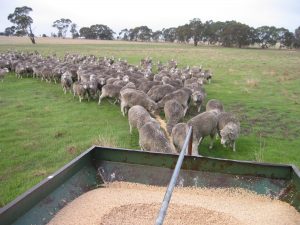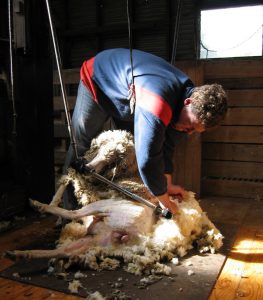
Overview
Wool Production focuses on the characteristics of Merino wool which influence its value, such as fleece weight, average fibre diameter, staple strength, staple length, colour, vegetable matter and style. The impact of genetics, nutrition, environment, physiology and management on these wool characteristics is examined. The interactions between these factors is explored in a range of environments, providing a systems approach to wool production in each and an understanding of the constraints to wool production at a national level, thus allowing the identification and evaluation of options available to the commercial woolgrower for improving productivity and the value of their clip.
“Introduction to Australian Wool Production” gives a general overview of the structure of the Australian wool growing industry. A profile of the industry, addressing such issues as the environment in which wool production is undertaken, the enterprises which produce wool and the quality and quantities of wool produced, is included.
The components and variability of the characteristics of Merino wool influence its value, such as fleece weight, average fibre diameter, staple strength, staple length, colour, vegetable matter and style. The relative importance of these raw wool characteristics to fleece value is also considered.
Sheep health and disease issues and the physiological demands placed on breeding ewes and young sheep are covered. Mechanisms of generalised (systemic) disease are examined and their impact on sheep production considered. The effect of internal and external parasites on wool production is explained and a basis for understanding the various control strategies available to the producer is provided. The impact of pregnancy and lactation on wool growth and quality is examined and the impact of changes in nutrition and feeding strategies for both breeding ewes and young sheep is addressed.
Topics within the genetics theme are breeding and genetics in the wool industry, and the genetics of fleece weight and fibre diameter and their importance for inclusion in breeding objectives. The genetics of disease resistance and the notion of breeding for improved resistance to disease in sheep is introduced. Genetic variation in style traits, and skin-based traits are described and systems incorporating these traits into breeding objectives are reviewed.
Improving performance and returns per hectare is the subject of “Grazing and Nutritional Management. The management and utilisation of perennial and annual pastures is examined, as is the feeding behaviour and diet selection of grazing sheep. Mineral nutrition problems of grazing sheep and grazing pressures in semi-arid rangelands are addressed.
Finally, genetic benchmarking and best practice benchmarking are addressed.
